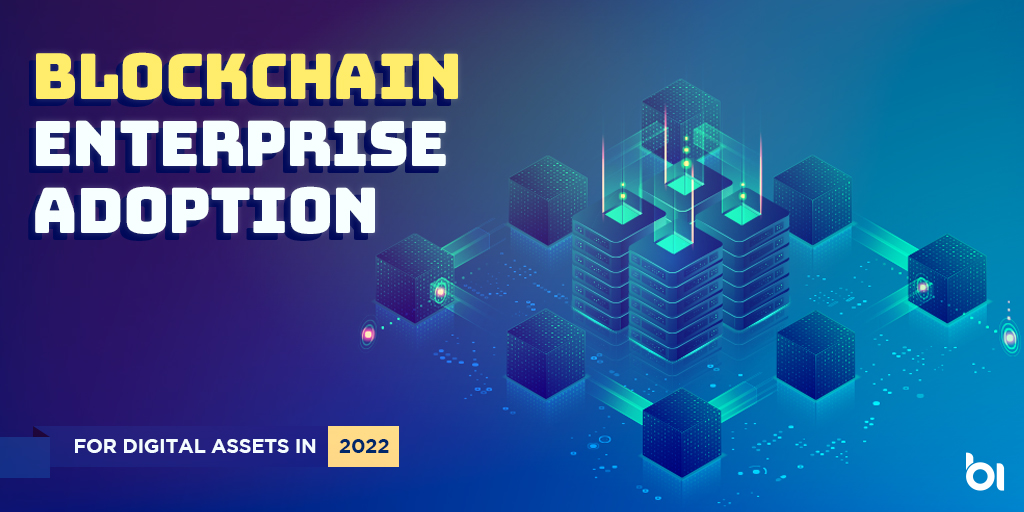Blockchain Introduction

Blockchain is a distributed database that allows for secure, transparent, and tamper-proof transactions. It is well suited for managing digital assets such as cryptocurrency, smart contracts, etc. Blockchain provides enterprises with a secure and efficient way to manage their digital assets. Enterprises that adopt blockchain can benefit from increased security, efficiency, and transparency.
Read Also: How To Pick The Right Blockchain Platform For Your Business Use Case
The Rise of Digital Assets
In 2019, enterprises will finally realize the power of digital assets, but in 2020, when Blockchain Enterprise Adoption and innovation will spread to businesses and governments, it will become the new standard.
By 2023, it will be difficult to find any company that is not using blockchain to manage digital assets. As of now, more than thousands of projects have demonstrated a business model in blockchain, but it still took more than 10 years to reach the adoption stage.
We don’t even talk about the current status of Blockchain Enterprise Adoption in the corporate world. It is a slow and gradual process that needs a lot of time, research, and experience. However, it will soon change as businesses realize the potential of blockchain and it is only a matter of time before the new blockchain becomes a new standard.
Blockchain Enterprise Adoption
As an enterprise, we should try to adopt blockchain for different industries. Here are 4 important use cases where enterprises can utilize the technology.
Financial: With blockchain, we can build a system where the data stored across different networks is immutable, secure, and distributed. This is known as permissioned blockchain.
Government: Blockchain will make sure that the government keeps its records safe. When it comes to government, the main benefits are increased transparency, lower cost, better accountability, and efficiency.
Health: Blockchain can be used in the health sector to keep patient data safe.
Education: Blockchain can be used in the education sector to store all the data in one place.
Read Also: Top 5 Blockchain App Development Tools in 2022 & Beyond
Digital Assets: Blockchain Benefits for enterprises
Blockchain offers several benefits for enterprises that adopt it for managing digital assets. First, it is more secure than traditional methods of storing data. Second, it is transparent and tamper-proof, which helps to ensure the accuracy of data. Third, it is efficient and cost-effective.
Finally, it offers the potential for tracking the provenance of digital assets. Overall, blockchain is a promising solution for enterprises that need to manage digital assets. Its security, transparency, and efficiency make it a good option for businesses that want to streamline their processes and reduce costs.
Why enterprises should adopt blockchain for digital assets
There are many reasons why enterprises should adopt blockchain technology for managing digital assets. First, blockchain is a distributed database system that allows for secure and transparent record-keeping. This means that enterprises can track and manage their digital assets securely and efficiently.
Second, blockchain technology is tamper-proof, meaning that once data is entered into the blockchain, it cannot be changed or deleted. This ensures that enterprises can rely on the accuracy of their data.
Third, blockchain technology offers enhanced security features, such as encryption and private key management. This makes it more difficult for hackers to access enterprise data.
Fourth, blockchain allows enterprises to create smart contracts. These are contracts that can be automatically executed when certain conditions are met. This can help to streamline business processes and reduce the risk of human error.
Overall, there are many reasons why enterprises should adopt blockchain technology for managing digital assets. Blockchain offers a secure and efficient way to track and manage data, as well as enhanced security features and smart contract functionality.
How to implement blockchain for digital assets
To implement blockchain for digital assets, enterprises need to first understand how the technology works. Blockchain is a distributed database that allows for secure, transparent, and tamper-proof transactions. This makes it ideal for managing digital assets such as documents, contracts, and other records.
Once enterprises have a good understanding of how blockchain works, they need to decide which platform to use. There are many different blockchain platforms available, each with its advantages and disadvantages. Enterprises need to choose the blockchain platform that best meets their needs.
Once a platform has been selected, enterprises need to set up a node on the network and start developing their application. The application will need to be able to interact with the blockchain to create, update and delete assets.
Overall, implementing blockchain for digital assets is not difficult, but it does require some planning and development work. The Enterprises that take the time to do this will be well-positioned to take advantage of the many benefits that blockchain has to offer.
Conclusion
Blockchain is a distributed database that offers a secure, transparent, and tamper-proof way to store digital assets. Blockchain Enterprise Adoption blockchain to store digital assets because it is more secure than traditional databases, it is transparent so all parties can see the data, and it is tamper-proof so the data cannot be changed without everyone knowing.




